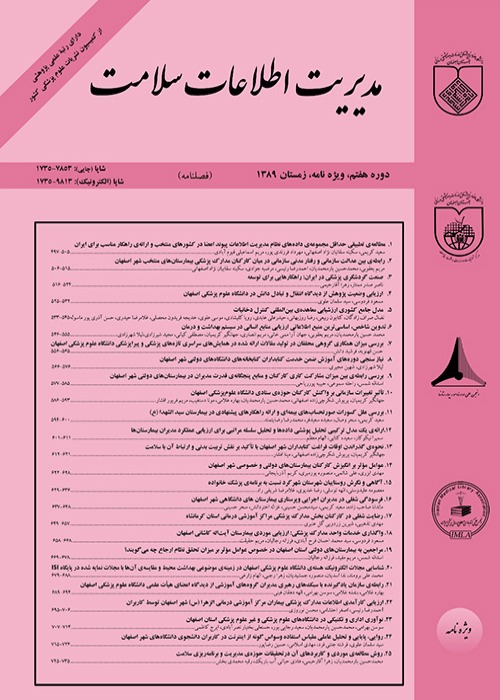Information Architecture for Mission-Based Management System in School of Medicine, Iran University of Medical Sciences
In the new paradigm of administrative and organizational relations in medical schools, there are four main missions that might be defined and compensated, integrated and aligned with university's mission. University objectives and missions should be rationed among teaching departments and faculty members. Each individual and department should be rewarded according to how much they share in meeting the objectives. This article aimed to figure out the information architecture of the information system suitable for academic behavior management in School of Medicine, Iran University of Medical Sciences (IUMS), Tehran, Iran.
This comparative, information modeling study used business system programming (BSP) to design information architecture. The implementation models in a variety of universities were studied in order to identify missions, objectives and values of mission-based management (MBM) system. The objectives of IUMS for implementing the MBM from the viewpoints of the directing board of the School of Medicine and the IUMS were identified and prioritized using the nominal group technique (NGT) and interpretive structural modeling (ISM). These objectives were the inputs of the first phase of BSP. Other data and information necessary for other phases were gathered via interviews with staff and authorities of related departments, and observing the documents and processes. The final output of the system was the information architecture.
Nine information subsystems were detected in the information architecture. They included managing missions and objectives, planning educational activities, planning research activities, planning administrative and social activities, planning health care activities, empowering the academic staff and heads of teaching departments, performance evaluation and review and improvement, financial management and mission-based budgeting, and accounting and supplying the teaching department.
Successful implementation of MBM depends on an integrated information system supporting all subsystems. This research revealed some subsystems which did not existed in current systems.
- حق عضویت دریافتی صرف حمایت از نشریات عضو و نگهداری، تکمیل و توسعه مگیران میشود.
- پرداخت حق اشتراک و دانلود مقالات اجازه بازنشر آن در سایر رسانههای چاپی و دیجیتال را به کاربر نمیدهد.


